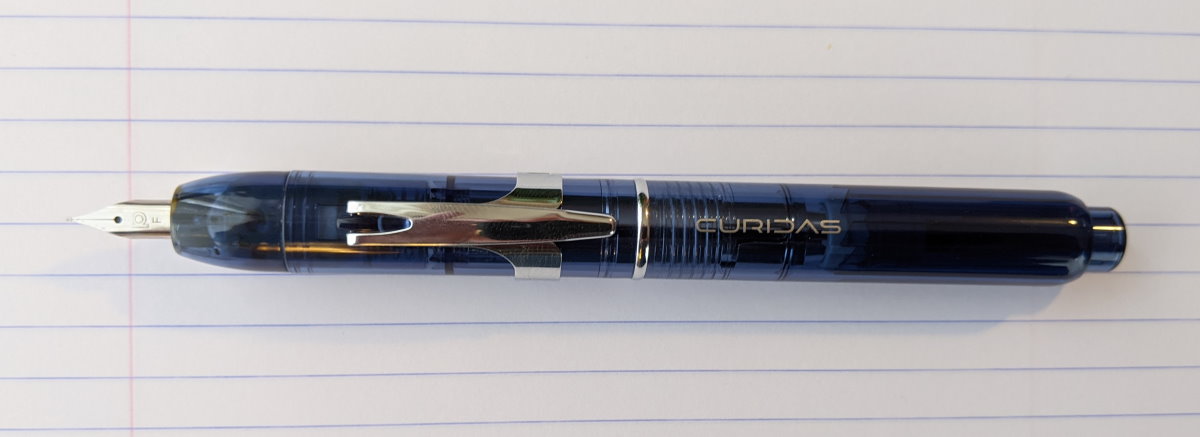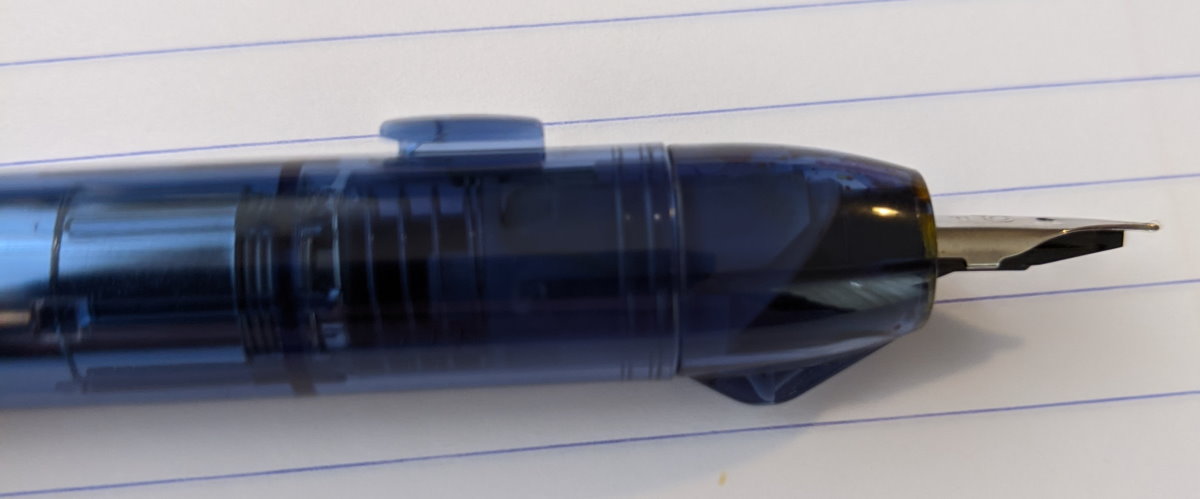Platinum 'Curidas' Review: Painfully Close to Perfect
I generally like Platinum’s pens – they make some of the best inexpensive fountain pens on the market (the $4 Platinum Preppy is an incredibly solid writing device for new and experienced users alike). Their Curidas is their most recent pen, and it’s retractable!

Retractable fountain pens aren’t common. Unlike ballpoint ink (which is made from alcohol and fatty acids), rollerball and fountain pens use ink made from dyes dissolved in water. This type of ink flows easily, leading to a smoother writing experience, but is more prone to drying out. This is why most rollerballs and fountain pens have caps. While there are retractable fountain pens, they’ve historically required more complex, mechanical sealing mechanisms to isolate the tip when the pen was retracted, and, as a result, were generally pricy (Pilot’s Vanishing Point will cost you $156). Unless that retractable tip was really important to you, it was easier to put up with a cap.
Platinum’s Curidas only costs $80, making it much cheaper than other retractable fountain pens (though still way more pricey than a non-retractable Platinum with similar features and build). It writes well (Platinum makes good nibs), and it looks attractive. So, why aren’t I giving it a full-throated endorsement? Well…
We’re going to talk a bit about the ways different people hold pens – if you’re unfamiliar with the terms side-writer and under-writer, please take a quick look at my old TWSBI Go review which has pictures of the different positions so you know which group you’re in.
Lots of fountain pens (such as the Lamy Safari, and several TWSBIs) use a molded grip section to coax you into the standard tripod pen grip. For a right-handed under-writer, that’s fine – it’s likely how you already hold your pen. For others (like me, I’m a left-handed side-writer), a molded grip can cause issues. Unlike ballpoint or rollerball pens, which don’t care how you drag them across the page, fountain pens need to be held a certain way – about 45 degrees off the page, with both tines making contact with the paper – for you to get a good, smooth experience. Since a side-writer holds their pen differently, they’ll need to rotate the pen in their grip, slightly, to keep the pen in the correct orientation.

Close-up of the tip with the clip attached
While the Curidas does not have a modeled grip, and the nib if fairly forgiving about its position, the pen does have a clip that fits over the grip section. The clip likely won’t bother you if you’re a right-handed writer, but if your left-handed, it will likely push your grip just slightly off center. While you can remove the clip, it’s held into place with notches in the sides of the pen, and those notches are noticeable against your fingers when writing.

Close-up with clip removed - note the bumps on the top and bottom.
Also, while you can remove the cap, I’d be careful about taking it off and putting it back on too many times – it requires provided tool to take it off and the plastic it’s hooked into seems like it could easily snap.
Additionally, the way Platinum implemented the sealing mechanism causes there to be small bump at the bottom of the pen, which is likely more noticeable if you’re not using a common grip.
To be clear, none of this is a dealbreaker in the way the TWSBI Go simply won’t write if you’re left-handed. The Platinum Curidas will give you a nice line of ink, but that grip kept irking me.
It’s frustrating, though, because the pen is so close to perfect. It’s a good weight, the retractable sealing mechanism does its job nicely (the pen can comfortably go weeks without use and not dry out), as I mentioned it looks pretty cool if you like translucent plastic pens, and the writing experience, when you’re in the right position, is solid, smooth and doesn’t skip.
Platinum did excellent work here. But, unless that retractable tip is the feature you want, I’d argue you can get pens that are more comfortable, that write just as well, for far less money.